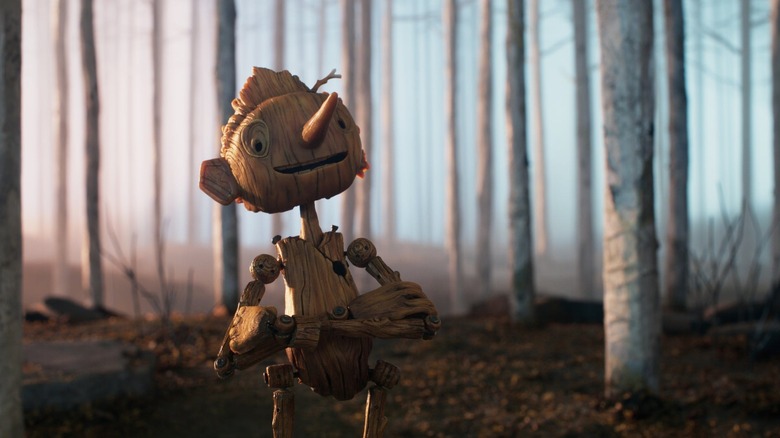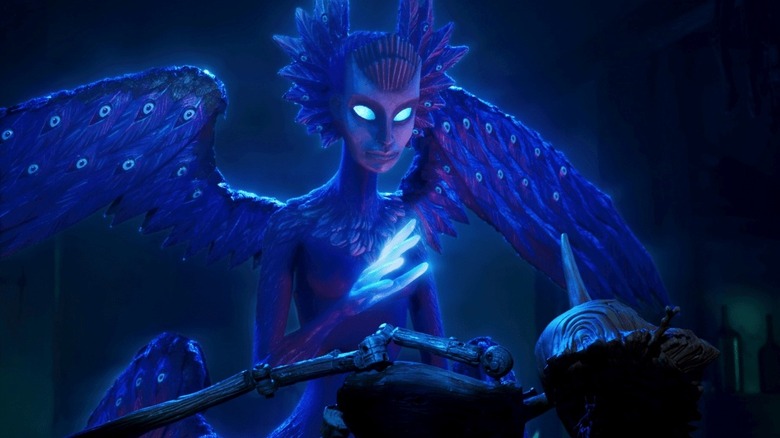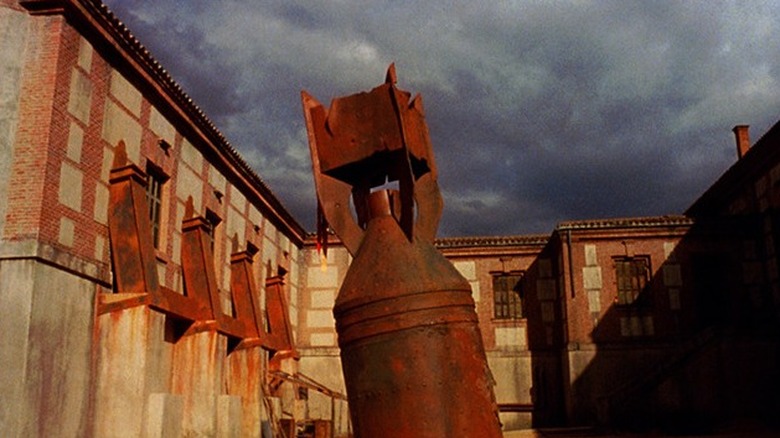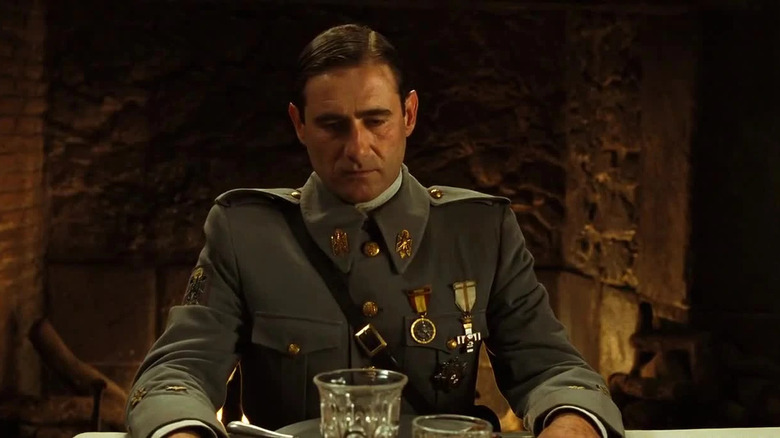Guillermo Del Toro's Pinocchio Is A Guillermo Del Toro Movie In Every Possible Way
This article contains spoilers for "Guillermo del Toro's Pinocchio."
Even when adapting others' stories, Guillermo del Toro always puts a personal thumbprint on his movies. He remixed Mike Mignola's "Hellboy" as a superhero spin on Beauty and the Beast, reframing the relationship between the eponymous hero (Ron Perlman) and Liz Sherman (Selma Blair) as a love story. In his 2021 remake of "Nightmare Alley," he eschewed the ghostly black-and-white color scheme of the original film. Courtesy of cinematographer Dan Laustsen, del Toro's film mixed lurid, snowy blues with golden yellow hues; the blood really pops in both colors.
The filmmaker's most recent feature, the stop-motion "Guillermo del Toro's Pinocchio" was released on Netflix, to critical acclaim. The tale of the wooden boy is a classic that's been retold many times, but del Toro found a fresh way to spin the story and make it feel a piece with his films; both his Spanish-language fantasy dramas and his American blockbusters.
Angel eyes
Besides Sebastian J. Cricket (Ewan McGregor), "Guillermo del Toro's Pinocchio" doesn't have the anthropomorphic animals of the Disney version. The talking fox Honest John is replaced by Count Volpe (Christoph Waltz), who's named after the Italian word for "Fox" but is a normal human. There are also no little boys being turned into donkeys, just fascists, but more on that later.
That doesn't mean del Toro elides the fantasy elements, though; this is a story about a talking, walking puppet after all. The Blue Fairy (Tilda Swinton) brings Pinocchio to life. Rather than a blonde ingenue with wings and a diamond dress, this fairy looks alien, with large, feathered wings and a stone-faced mask. Later, the immortal Pinocchio meets the Fairy's sister, Death (Swinton) as well. Her body structure resembles a griffin instead of a feathered serpent, but Death has the same mask and wings.
In a creepy touch, the sisters' wings each have multiple eyes spread across them. This design might look familiar because del Toro first used it for the Angel of Death in "Hellboy 2." Death in "Pinocchio" fulfills a similar role, restoring the title character to life in the climax. The Angel of Death was played by del Toro's frequent collaborator Doug Jones, and it isn't the only one of Jones' roles alluded to in "Pinocchio." The village church in "Pinocchio" features stained glass images of the Faun and the Pale Man (both played by Jones) from "Pan's Labyrinth."
Dropping bombs
"Pinocchio" is an Italian story, written by Carlo Collodi in 1883. Guillermo del Toro keeps that setting but moves the timeframe up to the 1930s when the country is under the Fascist rule of Benito Mussolini (Tom Kenny). Early in the film, the Austrian army drops bombs on Gepetto's (David Bradley) village, destroying the church and killing his son Carlo. That's why Gepetto, a carpenter, creates Pinocchio in his late son's image.
The image in "Pinocchio" of the bomb dropping recalls "Devil's Backbone." That film takes place in 1939 at the end of the Spanish Civil War when the Fascist Francisco Franco cemented his rule of the country. The small orphanage where the film is set is owned by socialist sympathizers Casares (Federico Luppi) and Carmen (Marisa Paredes) but they're not safe outside the building's walls — or within them. In the center of the orphanage's courtyard is a bomb embedded in the ground. When it was dropped on the orphanage by an aerial fleet, it miraculously didn't go off. However, the patrons haven't removed it for fear that doing so will activate it. The bomb represents how war impacts even the most innocent and the fear of living under oppression, that violence and death could come at any unexpected moment. "Devil's Backbone" isn't del Toro's only movie set in Franco's Spain — there's also his magnum opus, "Pan's Labyrinth."
The virtue of disobedience
Pinocchio is a mischief-maker, which earns him the ire of his father and the village's Podestà (Ron Perlman). Gepetto prefers to acquiesce to authority while Pinocchio spits at it. This dynamic recalls Ofelia (Ivana Baquero) in "Pan's Labyrinth," who fixates on storybooks despite her mother Carmen's (Ariadna Gil) disapproval. To secure her family an easy life, Carmen marries Vidal, a captain in the regime of Francisco Franco.
Vidal embodies the brutality and banality of fascism, as he's concerned only with order for its own sake and dying a warrior's death that his son will remember. Dr. Ferreiro (Álex Angulo) tells Vidal, "To obey for obedience's sake, just like that, without thinking ... well, that's only something that people like you can do, Captain."
Obedience is the last thing on Pinocchio's mind. While performing for Volpe, he disregards the Count's instructions and mocks Mussolini to his face. Pinocchio is then carted off to a youth training camp as punishment. This is the film's version of the Pleasure Island scene, with the little boys being metaphorically transformed rather than magically so. However, Pinocchio's rebellious spirit spreads. He befriends the Podestà's son Candlewick (Finn Wolfhard) and inspires him to step out from under his father's boot. Most fables give the audience lessons supporting obedience; respect your parents, elders, authority figures, etc.
Stories like "Pan's Labyrinth" and del Toro's "Pinocchio," though, show how obedience to an unjust authority is not a virtue at all.



